A skilled sculptor in his own right, Cameron Castrillo looks to his upbringing and apprenticeship under his uncle Eduardo Castrillo Historical monuments have embodied the aspirations, cultural heritage, and triumphs of a people. However...
Historical monuments have embodied the aspirations, cultural heritage, and triumphs of a people. However, there’s more to these monuments than the heroes and stories they portray. Public artworks, with their massive scale and structural complexity, are made by a team of artists, craftsmen, and apprentices, who have eventually blazed new trails as artists in their own right. One such apprentice-turned-sculptor is Baras, Rizal-based Cameron Castrillo.
Growing up in a lively atelier brimming with art objects, materials, and skilled artisans, Cameron spent his formative years in a sculptor’s studio as a young apprentice to Eduardo Castrillo, a Filipino sculptor renowned for erecting some of the most iconic historical monuments in the country.
READ: Why Makati’s concrete architectural gems deserve a second glance
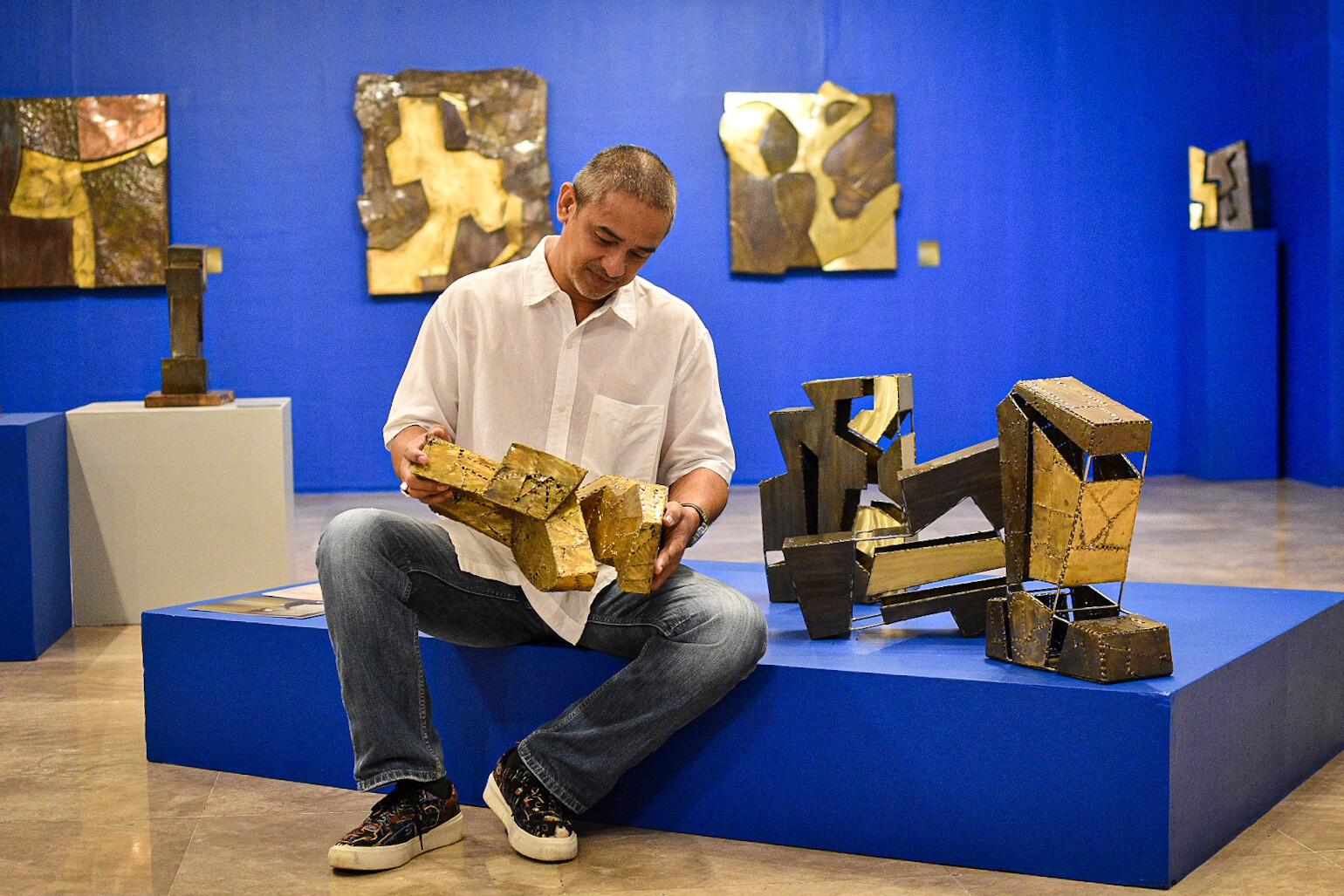 Cameron Castrillo
Cameron Castrillo
As Eduardo’s nephew and mentee, Cameron gained firsthand insight into the production of art objects and monuments. Having worked under the tutelage of his uncle, the younger Castrillo gained something beyond the capacity to wield materials for the construction of national monuments—he learned how to truly see nature, to open his eyes, perceive, and understand principles of life and art-making by observing the natural world with depth, curiosity, and intentionality.
Being part of a clan of artists—starting with his grandfather who was a jeweler, down to his many uncles and cousins who are accomplished sculptors, illustrators, and creatives in their respective fields—provided Cameron with an early grounding in the arts. As a child, he learned that the act of seeing and the process of creating are fundamentally intertwined. As an adult, his daily morning meditations involve recording through drawings what he sees around him and what he imagines within his inquisitive mind. His own exploration of brass as a sculptural material is informed by the principles that he had learned as an apprentice to a master sculptor.
Perhaps what sets the younger Castrillo apart is his childlike approach to his craft. “Art-making is ‘play’ for me—it is not therapy nor an escape from the real world but a time and space for play. Most of my sculptures don’t have a fixed orientation. I want my collectors to play with the orientation of my works in the same way that I manipulate my materials with playfulness and childlikeness,” shares Castrillo.
READ: One of the Philippines’ first 3D anamorphic video art installations by Elmer Borlongan is now on a billboard
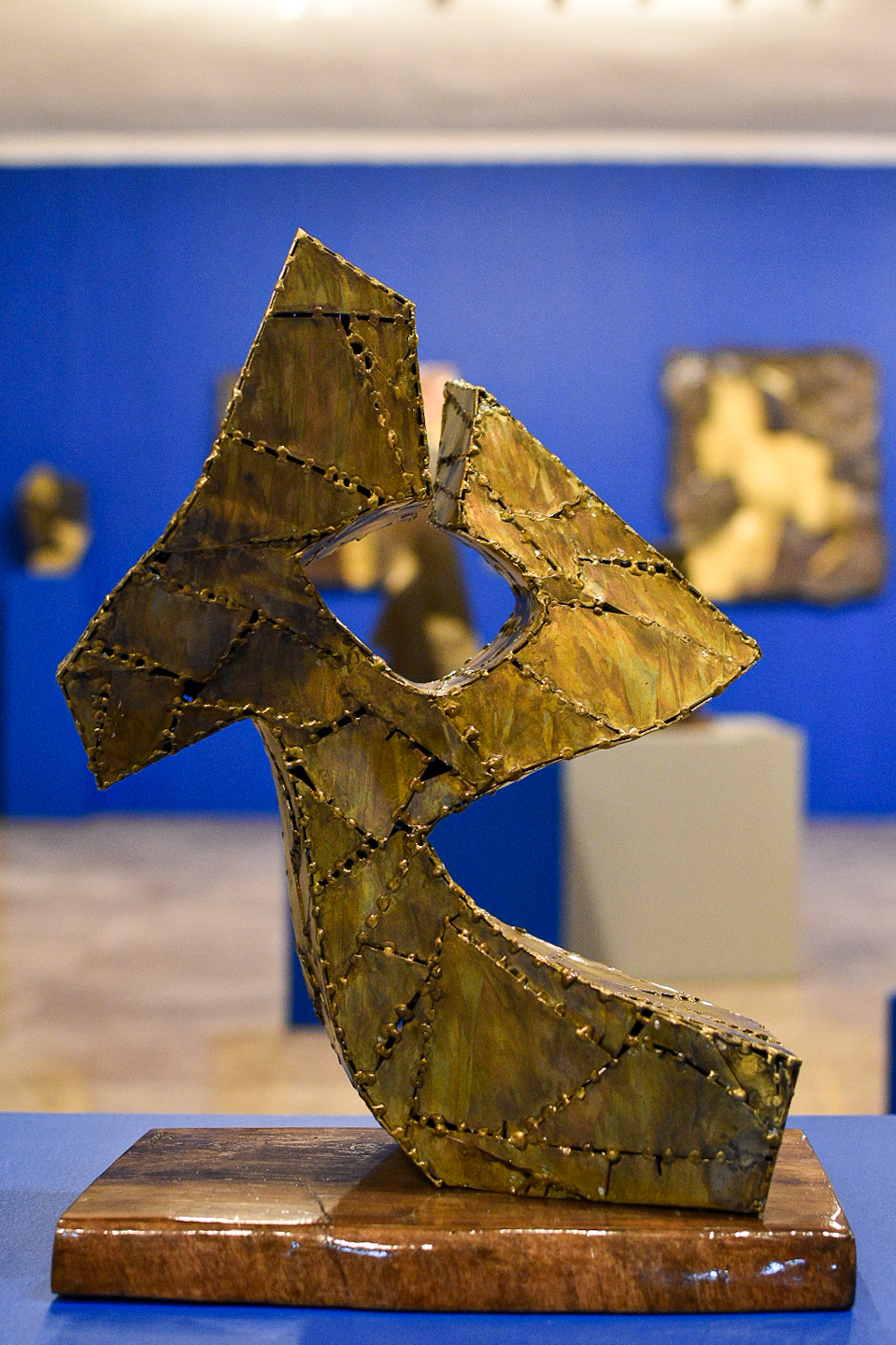 “Resilience”
“Resilience”
Having quietly and steadily worked as an apprentice to the master sculptor who created some of the nation’s most recognizable historical monuments like the People Power Monument and the Bonifacio and the Katipunan Revolution Monument, perhaps it is no coincidence that his debut solo show “Beyond Brass” was made possible by a visual arts grant awarded by the National Commission for Culture and the Arts (NCCA).
In “Beyond Brass,” Castrillo was awarded as a winner of the NCCA’s 2024 Competitive Grants Program, made possible by the National Endowment Fund for Culture and the Arts (NEFCA). The artist presented a series of sculptural pieces that symbolize the resilience of the human spirit and a reflection of his own journey in overcoming challenges and setbacks.
“Beyond Brass” zeroed in on the historical importance of brass in the Philippines. Your use of brass also pays homage to the Castrillo family legacy. Can you walk us through your creative process?My environment influences and informs my creative process. When an idea crosses my mind, usually when I am having a cup of coffee in the morning, I immediately record my idea through a sketch or two. When I don’t have my sketch pad with me, I immediately manipulate metal to instantly record an idea. Although I am inspired by nature for the most part, my drawings tend to be non-representational in subject matter. Similarly, my sculptures are mostly geometric. There is a direct relationship between my drawings and my sculptures. The transposition is almost 1:1.
Why did you choose brass as your primary material?I grew up watching my uncle, Eduardo Castrillo, manipulating and pushing the boundaries of brass and other metals as primary materials for sculpture. His studio was my immediate environment growing up. I have learned to appreciate the visual and material properties of brass since I was a child.
There is an elegance to brass that resonates with me. There is something about its malleability that I have always been drawn to. Although, I must say, brass is a very expensive material. And cost matters in my process because as much as possible I only use brass in my sculptures—from the surface down to the sculpture’s structural support—although I have also incorporated the use of stainless steel into some of my works in the past.
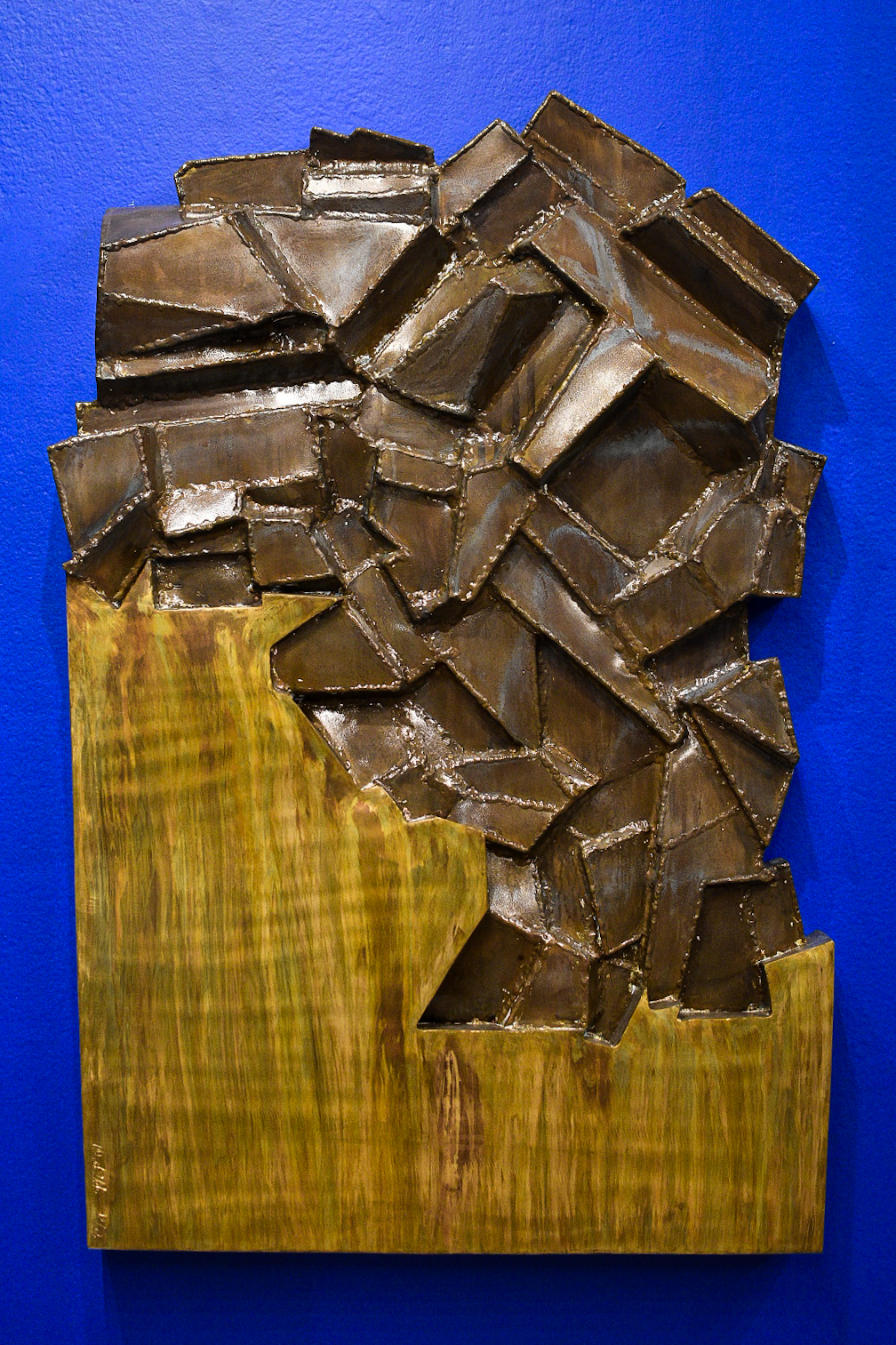 “Treasure Trove 4”
In what ways did the studio work of your uncle and mentor, Eduardo Castrillo, influence your own art practice?
“Treasure Trove 4”
In what ways did the studio work of your uncle and mentor, Eduardo Castrillo, influence your own art practice?
He influenced me greatly. He was my idol and my master. He was the one who opened the door for me to pursue a career in the studio arts. When I was in high school and even before that, I was an apprentice to my uncle. I spent my formative and teenage years in his studio.
If you are aware of my uncle’s Douglas MacArthur monument formerly situated at the main gate of the Pamantasan ng Lungsod ng Maynila, I was the one who cut the “padron” for the legs and thighs of the MacArthur figure. It was summertime then and my uncle Ed gave me extra allowance for cutting the copper used for the monument. I was still in elementary school when I became part of the team that worked on that public sculpture. That’s how young I was.
Eventually, I not only became his apprentice, but I also became part of the team that continuously restores his monuments like the People Power Monument, and the Bonifacio and the Katipunan Revolution Monument beside the Manila City Hall.
It is said that more things are caught rather than taught. What are some of the most important principles in art-making that Eduardo Castrillo imprinted upon you?I saw him work for a huge part of my life. I have witnessed how he forms a sculpture little by little. I was literally beside him whenever he would start and complete his most important pieces. I truly caught so much by simply observing him.
There was one time when we were in the garden, he told me, “Cameron, let’s have merienda. You see that tree? You see the branches and how each branch moves? You see how the wind blows through the branches and the leaves? Do you see how there is a flow in the movement of all things?”
He taught me form and movement through nature. One time he asked one of his assistants to light a cigarette, he then taught me to observe the smoke—its form and movement—and how the smoke has an undulating and wispy flow to it. “Minsan may katigasan ang mga trabaho mo. Kailangan makita at makuha mo ang landi ng usok. (Sometimes your sculptures have a sense of rigidity to them. You need to be able to perceive and capture the flirtatiousness of the smoke).”
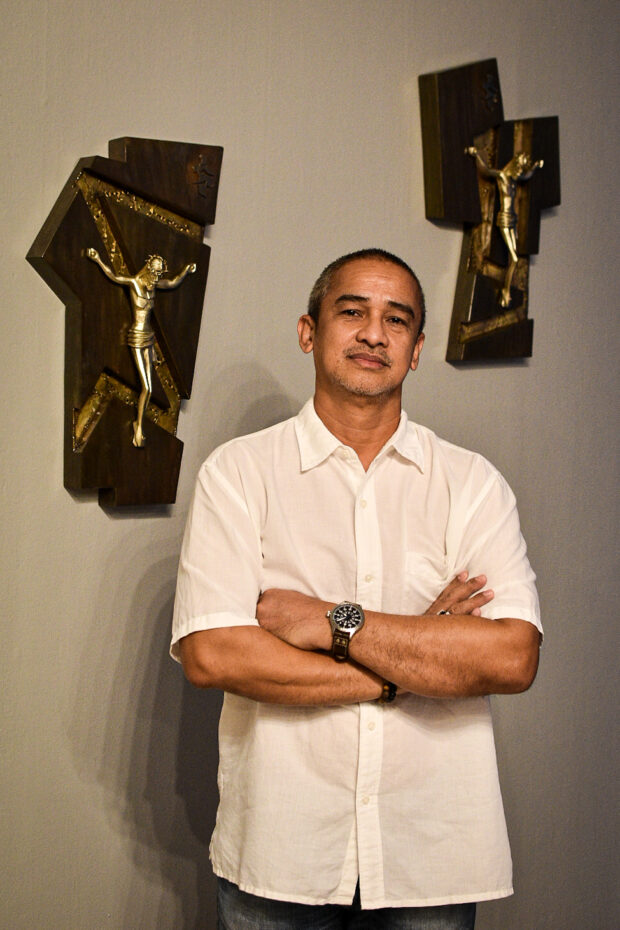 “Crucifix in Shield”
“Crucifix in Shield”
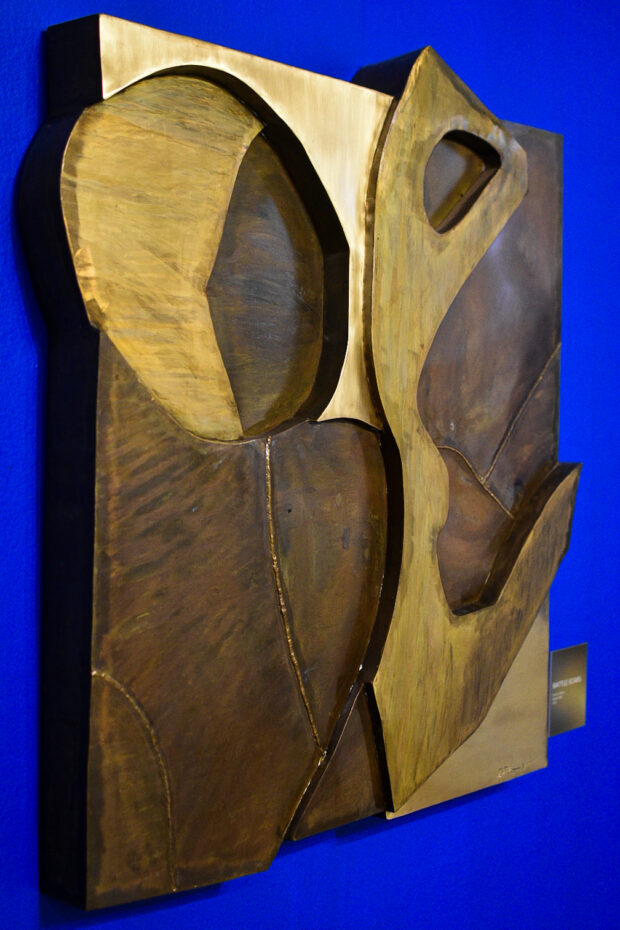 “Battle Scars”
Although you were mentored by your uncle, you mentioned that you two are very different. For him, observing the flow of nature is most important. However, you presented a highly abstracted sculptural work that alludes to your life’s battle scars. Can you expound on this difference?
“Battle Scars”
Although you were mentored by your uncle, you mentioned that you two are very different. For him, observing the flow of nature is most important. However, you presented a highly abstracted sculptural work that alludes to your life’s battle scars. Can you expound on this difference?
Lesson learned, experience earned. As a life principle, I believe this. For me, it’s important to take from my personal journey in life. As a subject matter, battle scars symbolize my journey from a childhood spent in my uncle’s art studio to my eventual profession in the semiconductors industry and, inevitably, my return to full-time studio practice but this time around as a solo sculptor. This is why I have a deep appreciation for fellow artists and individuals who tell me that they love my work. Having people resonate with my personal journey that is embodied in my sculptures means the world to me. Their appreciation is enough for me.
The proposal for “Beyond Brass” was named one of the winners of NCCA’s 2024 Competitive Grants Program. Can you take us back to the application process?I am from Baras, Rizal. The head of our Tourism office sent me the application for NCCA’s Competitive Grants Program for 2024. I took it lightly. Out of sight, out of mind. And then one night, I saw the application announcement on my social media and I decided to work on filling out the application form and work on my application requirements. I submitted my entry at exactly 11:21 p.m. when the deadline was at midnight. The application was a clutch move, I know. I eventually received a message informing me that I was one of the few lucky recipients of the grant. The rest is history.
Your brass bas-reliefs possess noticeable painterly qualities. What is the reason for this?I deeply love paintings but I truly enjoy doing bas-reliefs. The reason why I love creating wall-bound works is because I believe that what’s hanging on a person’s wall speaks volumes about a person’s taste preference and personality.
I acknowledge that some of my bas-relief pieces do have an observable painterly quality. The patina is achieved by how I treat the surface of the brass that I use. Also, I love Ang Kiukok’s works. The expressive qualities of his works influenced me to apply a painterly quality to my bas-reliefs. His works influenced me to produce some bas-reliefs with figurative elements.
Needless to say, I love the works of my uncle Eduardo Castrillo and his brother Amado Castrillo. My uncle Amado used to be an illustrator for DC Comics. He also had his own comics magazine together with Nestor Redondo and Francisco Coching. In terms of painting, I love the expressive and painterly works by Federico Aguilar Alcuaz. I am inspired by Raul Isidro‘s paintings. I would love to have his paintings one day. I love his color harmonies and his compositions.
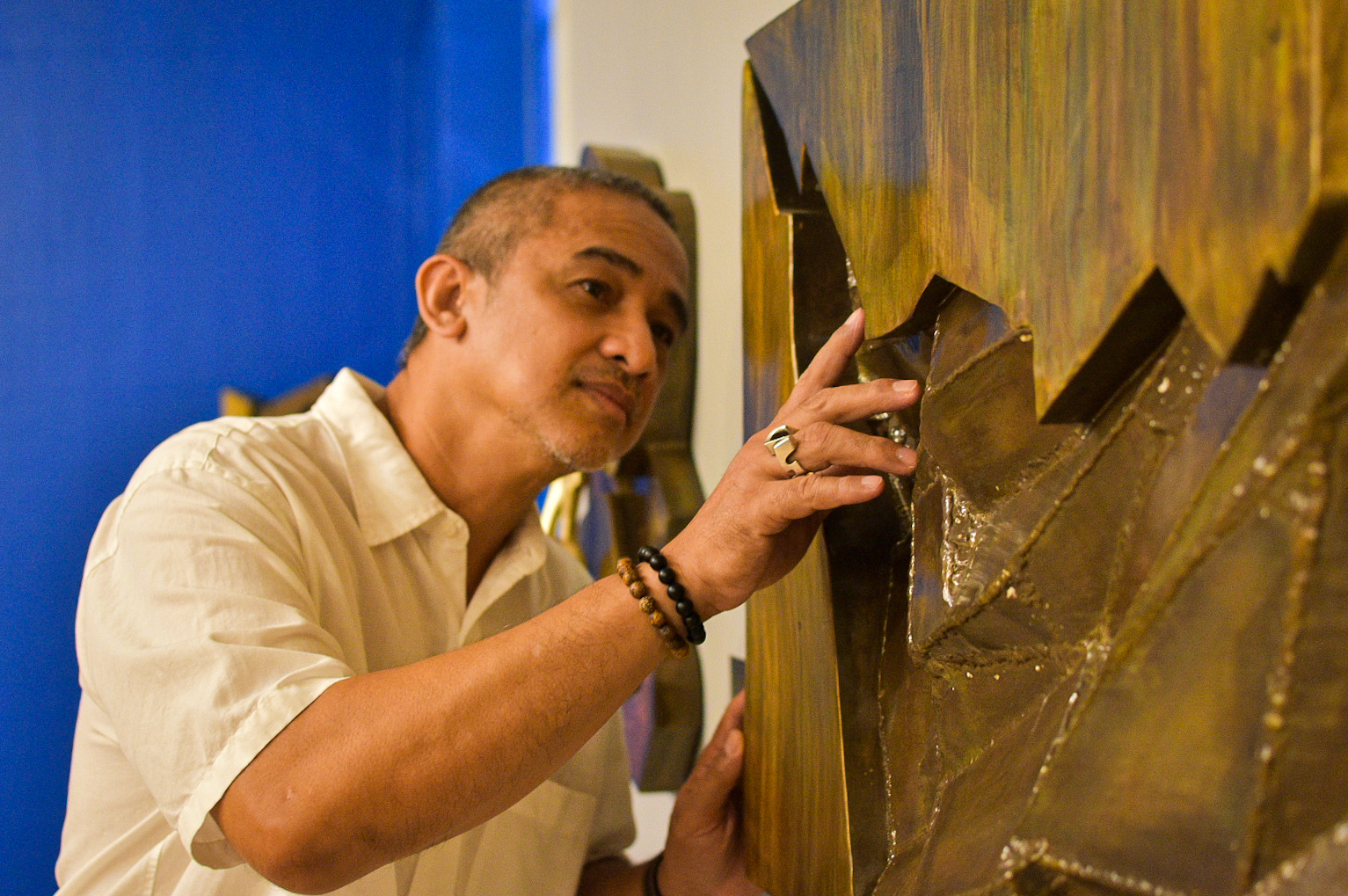 “I believe that what’s hanging on a person’s wall speaks volumes about a person’s taste preference and personality”
If there is a statement that would be attributed to you, what would it be?
“I believe that what’s hanging on a person’s wall speaks volumes about a person’s taste preference and personality”
If there is a statement that would be attributed to you, what would it be?
“Life is beautiful.” The titles of my works (e.g. “Unyielding,” “Strive,” and “Battle Scars”) revolve around the way I see life as a beautiful journey despite all the setbacks and challenges. I want my works to edify people, to remind people about the power of the human spirit. I am a homebody. I don’t go out. Seeing my family makes me happy. Spending time with my family makes me savor the beauty of life.
If scale, technology, and material and financial resources wouldn’t be limiting factors, what would your dream art project be?My dream is to create public art just like how my uncle Eduardo Castrillo produced several monuments. He wasn’t able to install his last public sculpture in Canlubang because he was already quite unwell at that time but I was able to help install the work on his behalf. As a way of honoring him and continuing the family legacy, I wish to be able to produce my own public sculptures. It’s my hope and my dream.
Why are you an artist?I grew up watching my family members produce art. Growing up, I have always loved colors. My family’s history opened the door for me to become an artist. There is a thrill in being able to create something. Art is everything to me.
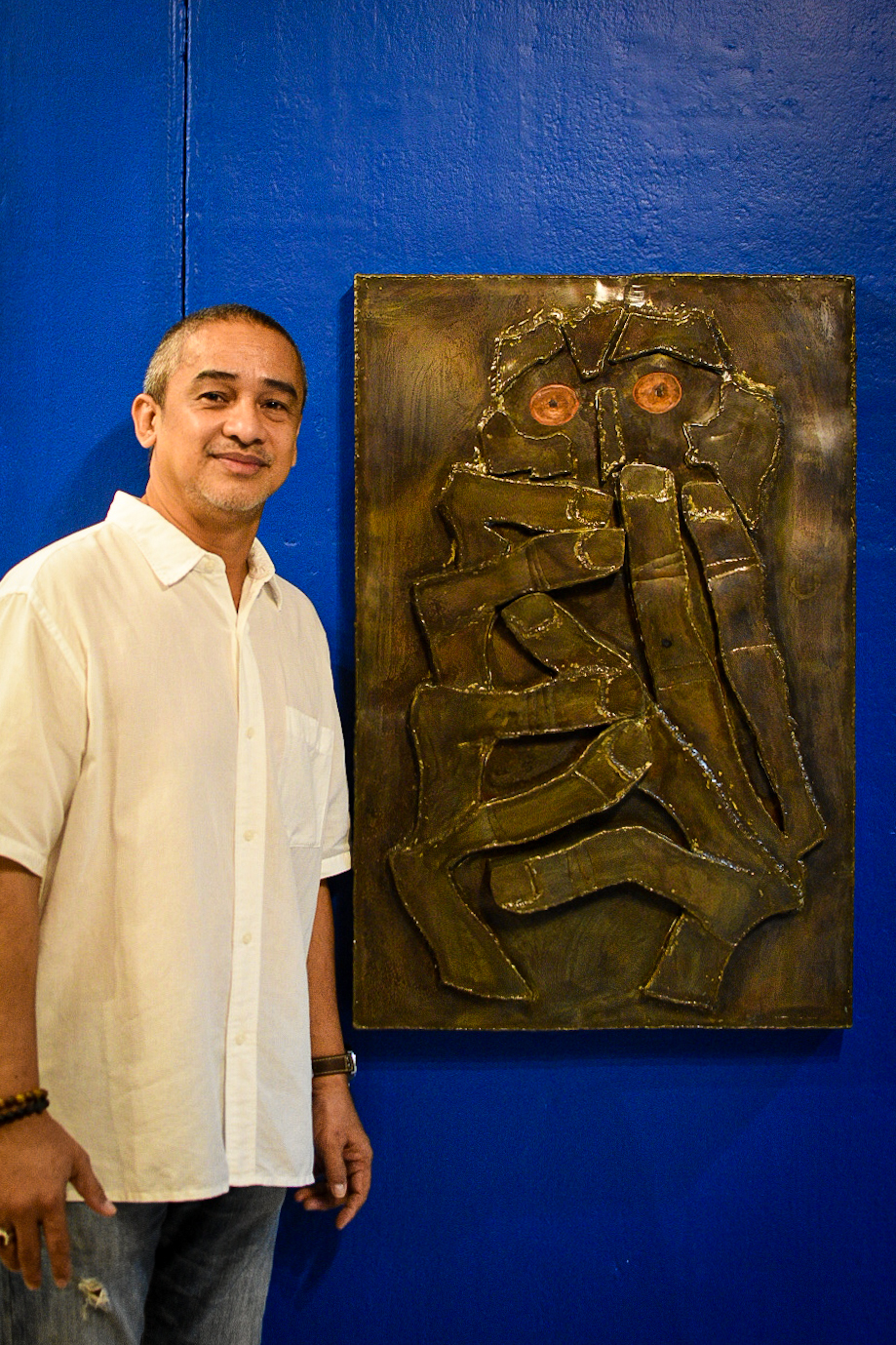 “Distorted”
“Distorted”
Cameron Castrillo’s debut solo exhibition “Beyond Brass” ran from July 8 to 31, 2024 at the National Commission for Culture and the Arts (NCCA) Gallery, curated by Mr. Randel Urbano. For more information about his works and commissioned pieces, email the artist at [email protected].
Special thanks to Mr. Brian Lapitan and Ms. Veronica Amboni of the NCCA.
Photos by Patrick de Veyraart casino